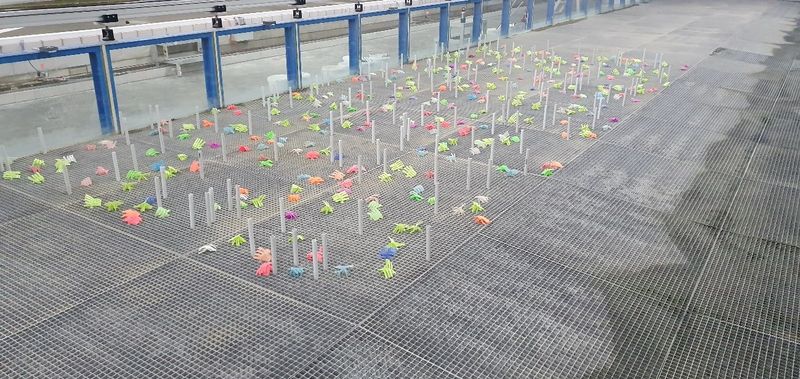Natural streams often exhibit a compound channel configuration, characterized by vertical segregation into two zones: the main channel and floodplains.
Floodplains, typically vegetated and intermittently dry, stand in contrast to the main channel, which maintains continuous flow throughout the year. During flood events, flow extends into both zones, giving rise to crucial mixing processes that play a fundamental role in shaping the riverine ecosystem. The deposition of sediments in floodplains, facilitated by slower flow velocities, fosters vegetation growth, as nutrients can become attached to the sediment particles. The subsequent growth of vegetation brings changes in the river's hydrodynamics, with variations depending on the characteristic of the floodplain forest, which structural complexity increases with increasing forest succession and tree ages.
Herein we investigate experimentally the hydrodynamics of compound-channel flows that uses real characteristics of floodplain vegetation extracted from real case surveys, including a combination of young and old vegetation specimens. These combinations are propagated from the initial forest settling to an old forest, with the objective of determining what are the impacts of the floodplain forest in the flow and provide data to support forest management throughout the growth of the forest.
This project is a collaboration between:
- University of Naples Federico II
- Federal Waterways Engineering and Research Institute
- Federal University of Mato Grosso do Sul
- Karlsruhe Institute of Technology


